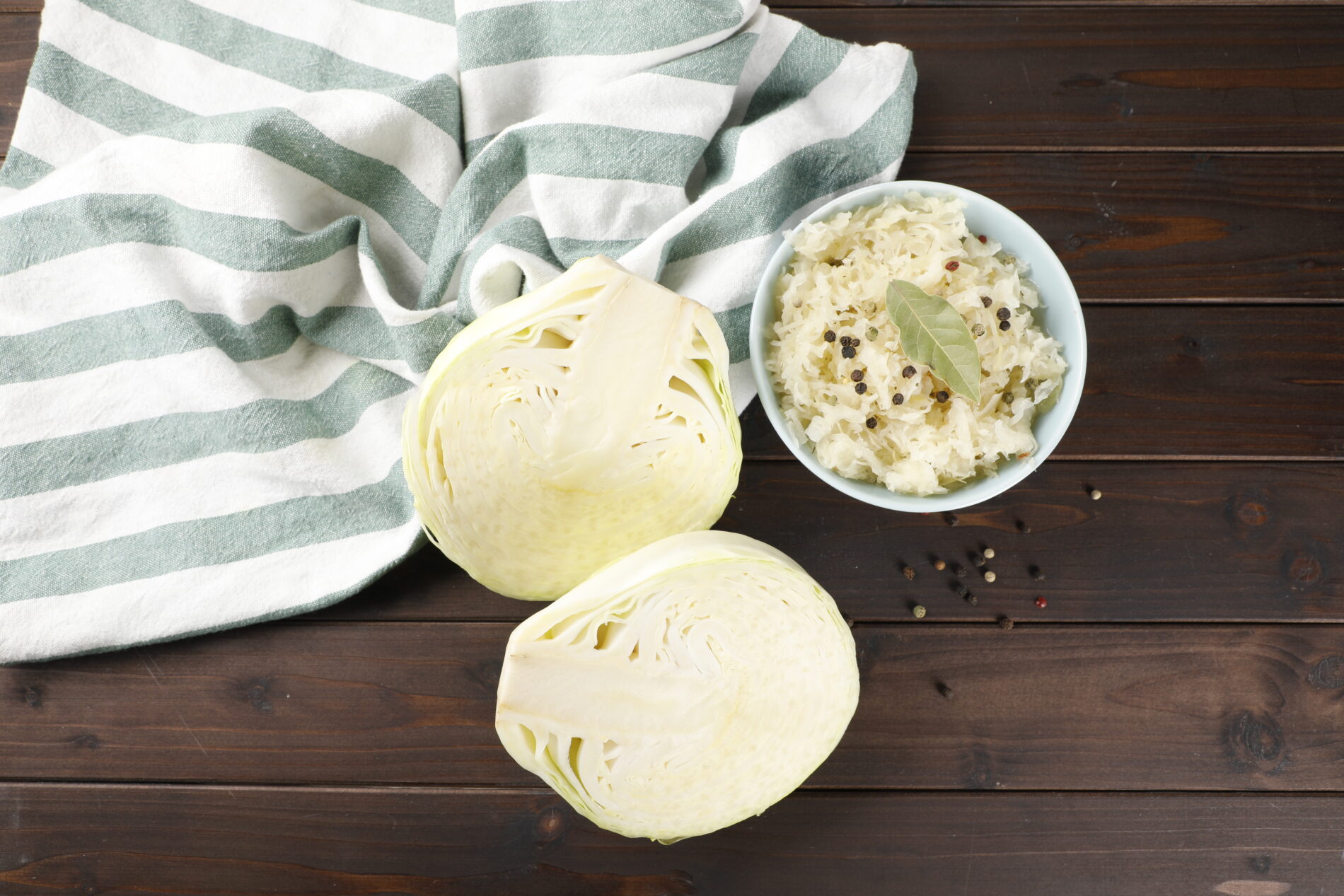Delicious, funky, zingy, sour ferment – one of the easiest yet the most versatile and beloved products in some regions of the world. Finely chop cabbage, add some salt, wait and here you go – the sauerkraut. The magic behind fermentation is quite simple (though our ancestors believed that some sort of witchery takes place): special bacterias of Leuconostoc and Lactobacillus genera, residing on the cabbage leaves, kick off a process called lactic acid fermentation when deprived of oxygen.
To start the process, we need to generously salt your shredded cabbage. Salt, due to the osmotic pressure, draws the moisture out of the plant cells, leaving a pool behind. To speed the process, you can massage the cabbage to draw the cabbagey water. The idea is to submerge everything. When the cabbage is completely covered, the anaerobic processes start, i.e. the ones that require the absence of oxygen.
Under these circumstances, lactic acid bacteria thrives and gradually eats up all the plants’ sugars to ferment them by converting into lactic acid. This is, arguably, one of the most important processes that helped people throughout the ages to transform fresh foods into preserves that would help them to sustain life during unfavourable times. But it’s also tasty!
Germany or China?
Although the word ‘sauerkraut’ is German, the idea is likely to have originated in China, where cabbage would be fermented in rice wine or in regular brine and known by the name suan cai. The practice was apparently later transmitted to Europe where it caught on. Today regional varieties also include shredded carrot, beet, bell peppers, cranberries and apples. Frankly, almost any sort of plant can be fermented in such fashion.
Plain cabbage is understandably the easiest variant, but you should definitely try the garlic version. Fret not, it’s absolutely date-safe and kids friendly. Too much garlic, of course, can make your ferment bitter but 2-3 cloves, added with some carrots for balance, will do the trick. Don’t go overboard with carrots too. Their sugar content is high enough to turn your ferment into a sweet goo. The general rule is 75% of cabbage and 25% of other ingredients.
Shred 1 kg / 2 ½ lbs of cabbage and 2-3 medium carrots, mince 3 cloves of garlic and combine everything together in a big bowl, mix and add 1 heaping Tbsp of fine iodine-free salt. Leave the salted veg to sit for 40-60 minutes. Then massage them passionately for 5 minutes to create even more brine. You’ll need a lot of it, because the next step is a tight packing into wide-mouth glass jars. You want the cabbage mixture to be pressed down tightly until the brine rises to the top covering everything beneath. This step is crucial, because the beneficial bacteria thrive in anaerobic conditions, i.e. without any oxygen.
Fermentation
During fermentation, the gas will try to push everything up so you’ll definitely need something to hold the kraut below the brine level. The finest trick is to use one washed outer cabbage leaf to use it as a cover for the ferment. Place it over the shredded cabbage and put something right on it. It can be anything weighty: from glass jars to special fermentation equipment designed for this purpose. Some people use ziplock bags filled with water – just fill them up and lay them down on the sauerkraut. Then close the lid, but not too tight, you need to let the gases go out. It’s also a good idea to open the lid to ‘burp’ the cabbage every day once. Sorry for saying the obvious things, but you must avoid explosions at all costs!
It’s also a good practice to label your ferment: use any sticky note on hand and jot down the date you started. Then wait for at least a week for your tangy, sweet and briny pickles and just eat them with everything! Add to your dinner meals as is or try to introduce sauerkraut to your cooking. Try to make kraut soup or pierogi, add it to your sandwich, braised short ribs, potato hash browns and casseroles.











What do you think?